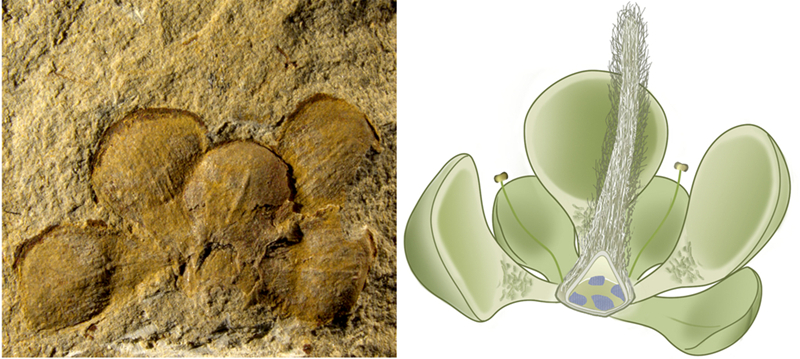Hitherto there is no record of typical flower in the pre-Cretaceous all over the world. Previously, the earliest typical flower is Callianthus dilae from the 125 million-year-old Early Cretaceous Yixian Formation. Recently, Professor LIU Zhongjian from National Orchid Conservation Center of China and Professor WANG Xin from Nanjing Institute of Geology and Palaeontology, Chinese Academy of Sciences reported their discovery of a typical flower, Euanthus panii, from the 162 million-year-old Jurassic stratum in western Liaoning, China in online published Historical Biology. Euanthus panii has all the flowers parts required for a typical flower, including calyx, corolla, androecium, and gynoecium. Its sepals and petals are well-differentiated, its anthers are tetrasporangiate, and its gynoecium includes a style and an unilocular half-inferior ovary. Several unitegmic ovules are enclosed inside the ovary. These characters make Euanthus panii the currently earliest Jurassic typical flower. The discovery of Euanthus panii opens a door for the research on origin of angiosperms. Liu Z.-J., Wang X*. A perfect flower from the Jurassic of China. Historical Biology, http://dx.doi.org/10.1080/08912963.2015.1020423 
Left, the holotype of Euanthus panii; Right, the reconstruction of Euanthus panii (Information Source: Nanging Institute of Geology and paleontology, CAS) |

